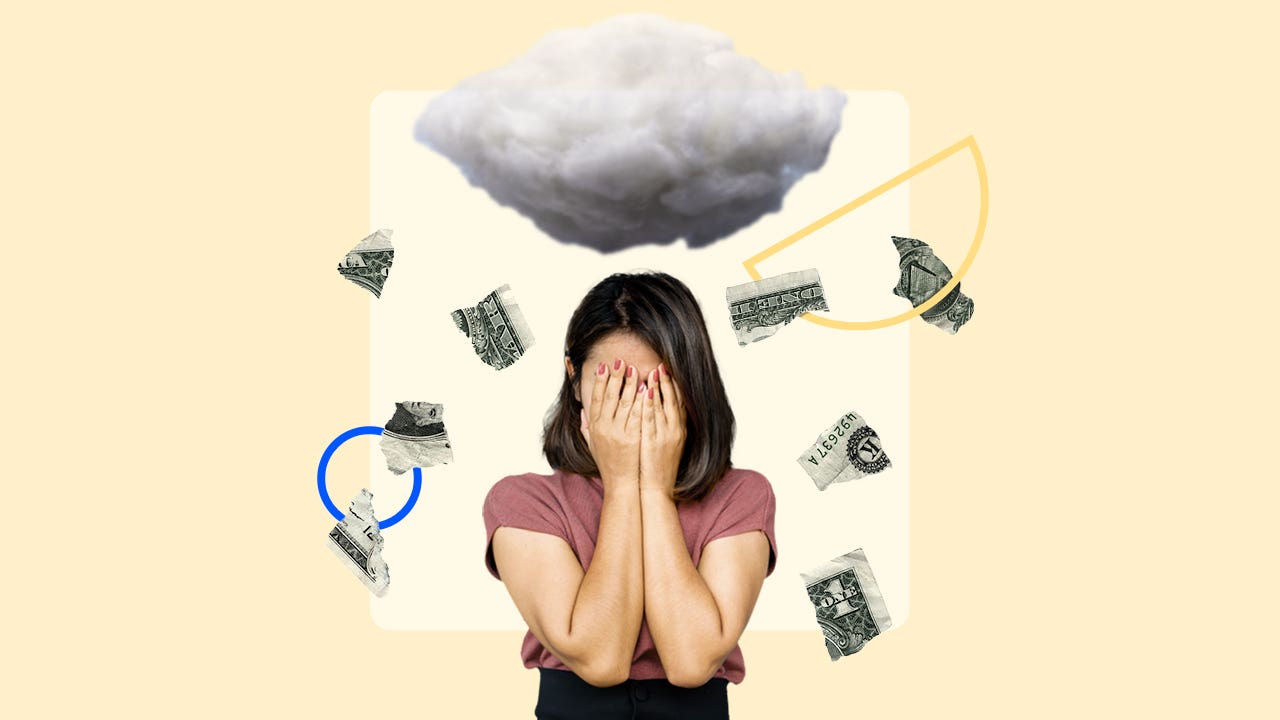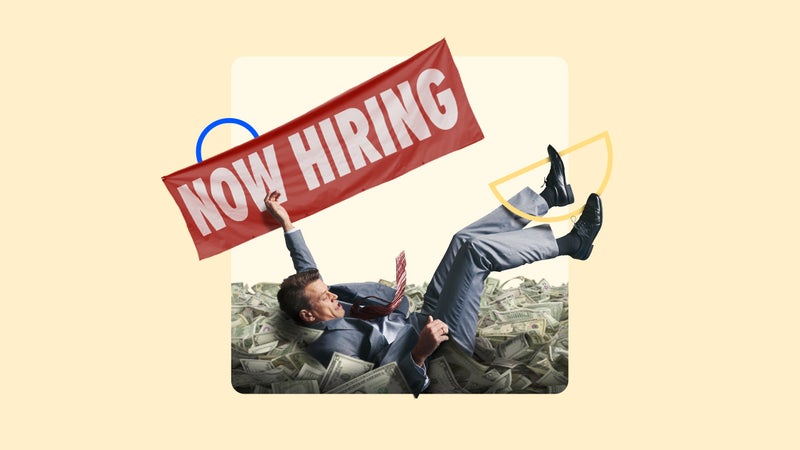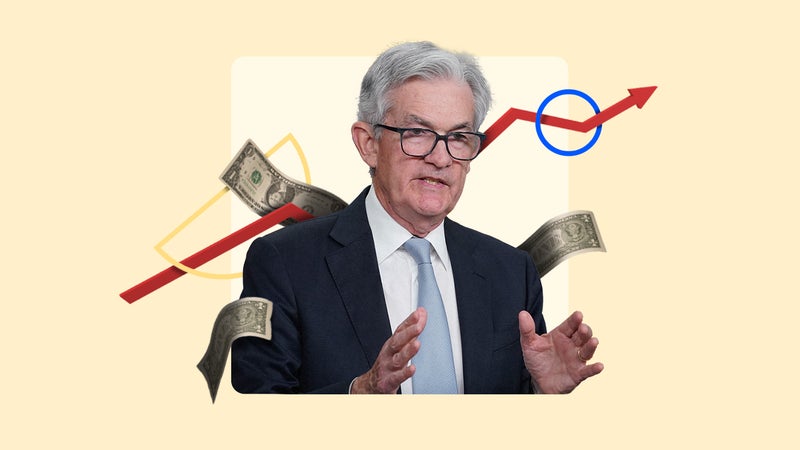Survey: Recession odds for U.S. economy have now fallen to the lowest level in two years

The Bankrate promise
At Bankrate we strive to help you make smarter financial decisions. While we adhere to strict , this post may contain references to products from our partners. Here's an explanation for .
When the Federal Reserve first started raising interest rates to cool inflation, the U.S. economy entering a recession seemed a foregone conclusion to the nation’s top experts. But quarter after quarter, unemployment held at a historic low, jobs remained plentiful and consumers kept spending — helping the financial system achieve what was considered unthinkable.
The odds of the U.S. economy entering a recession within the next 12 months have now fallen to a two-year low of 33 percent, according to Bankrate’s latest quarterly economists’ poll. That’s after soaring as high as 65 percent back in the third quarter of 2022 and falling to about a coin-flip by the final six months of 2023.
To be sure, only once has the Fed managed to raise interest rates and defeat inflation without causing a recession, suggesting the odds are still not in the U.S. central bank’s favor. Many economists also acknowledge that, even more likely than the economy completely avoiding a downturn, is the timing of the next one getting pushed back.
Consumers should prepare for a recession when it seems like nothing can bring the U.S. economy down, leveraging their stable paychecks and a high-yield savings account to build their emergency fund.
Momentum is expected to remain intact for the foreseeable future, with the nation’s unemployment rate remaining relatively low, providing a generally solid environment for individuals and households to accomplish their financial goals.— Mark Hamrick, Bankrate Senior Economic Analyst
Key insights on the economy from Bankrate’s Q1 2024 Economic Indicator poll
Economists keep pushing back their recession forecasts
Respondents put the odds of the U.S. economy entering a recession within the next 12 months from as high as 90 percent to as low as 0 percent — the lowest since Bankrate began polling economists on their recession forecasts. It’s also the first time since the third quarter of 2023 that no economist indicated they were absolutely certain of a recession, penciling in 100 percent odds.
The engine of economic growth is consumer spending, which picked up in February after a post-holiday spending spree slump in January, Department of Commerce data showed. But the foundation for consumption is the job market, where unemployment has held below 4 percent for the longest period since the 1960s.
That’s even as consumer prices cooled from a staggering peak of 9.1 percent to the most recent level of 3.2 percent. Typically, economists are taught in the early days of their profession that unemployment and inflation have an inverse relationship. When one goes down, the other should typically head up.
“A soft landing is likely as economic conditions gently cool and inflation gradually reverts to the Fed’s 2 percent target,” says Gregory Daco, chief economist at EY. “Noisy economic data at the start of the year has made the outlook more difficult to assess. Cutting through the noise, the economic picture hasn’t changed much.”
Last March, Fed officials thought the U.S. economy would grow just 0.4 percent between the fourth quarters of 2022 and 2023. Instead, the financial system ended up expanding a solid 3.1 percent. The resilient streak is expected to continue in the first quarter of 2024, with the Atlanta Fed’s GDPNow tracker estimating 2.8 percent growth.
The ultimate question is whether inflation can continue gradually retreating back to 2 percent without a broader economic slowdown. One factor that could have a double-edged sword: robust wage growth. One estimate from the Atlanta Fed suggests paychecks are still rising at a pace not seen since the 2000s. That could help keep the U.S. economy on solid ground, but businesses could also decide to pass along those higher expenses to customers if they don’t have increased output or productivity to show for it.
No matter what, recessions are just as unpredictable as they are inevitable. Economists also point out continued risks with geopolitical tensions abroad, such as in the Middle East, where conflict could further exacerbate energy or oil prices.
“Geopolitical concerns are likely to increase over the next year, raising questions about inflation and supply chains,” says Joel Naroff, president at Naroff Economics. “That could keep the Fed ‘higher for longer’ than even currently expected.”
Here’s what the nation’s top economists are saying about the U.S. economy’s odds of a recession
The probability of recession remains elevated and will stay that way as long as Fed monetary policy remains in restrictive territory. Even so, the risk has diminished in recent months on the resilience of the economic and financial data.— Scott Anderson | Chief U.S. economist at BMO Capital Markets
The economy will be increasingly at risk of a downside shock, as the expansion matures and as the stimulative effect of prior fiscal policy wears off.— Mike Englund | Chief economist at Action Economics
(I expect) sluggish growth but not a recession. The stock market is unlikely to keep rising, given the already elevated price-earnings ratio, and will hold back some of the wealth effect of consumer spending. Home price growth will be muted, also hindering the wealth effect. All the while, those not owning properties are tapped out, with COVID savings mostly depleted.— Lawrence Yun | Chief Economist at the National Association of Realtors
-
The First-Quarter 2024 Bankrate Economic Indicator Survey of economists was conducted March 15-25. Survey requests were emailed to economists nationwide, and responses were submitted voluntarily online. Responding were: Mike Fratantoni, chief economist, Mortgage Bankers Association; Odeta Kushi, deputy chief economist, First American Financial Corporation; Nayantara Hensel, Ph.D., chief economist, Seaborne Defense; Gregory Daco, chief economist, EY; Scott Anderson, chief U.S. economist, BMO; Dante DeAntonio, senior director, Moody’s Analytics; Lawrence Yun, chief economist, National Association of Realtors; Bernard Markstein, president and chief economist, Markstein Advisors; Robert Frick, corporate economist, Navy Federal Credit Union; Bill Dunkelberg, chief economist, NFIB; Sean Snaith, director, Institute for Economic Forecasting, College of Business at the University of Central Florida; Mike Englund, chief economist, Action Economics; Tuan Nguyen, economist, RSM U.S.; Brian Coulton, chief economist, Fitch Ratings; Joel L. Naroff, president, Naroff Economics; John E. Silvia, founder, Dynamic Economic Strategy; and Bernard Baumohl, chief global economist, The Economic Outlook Group.


